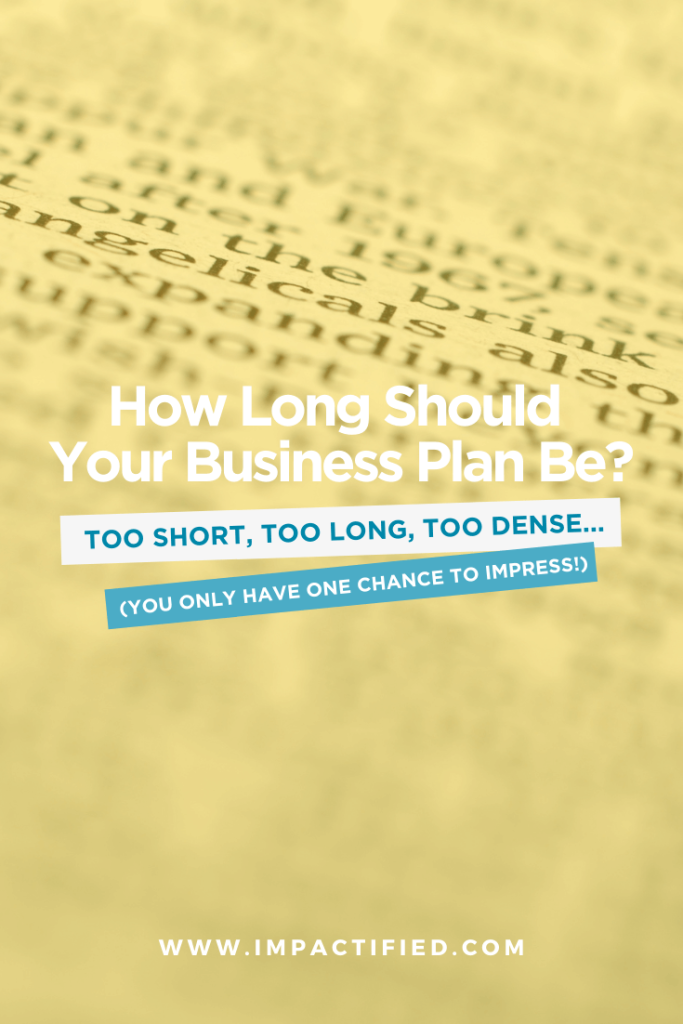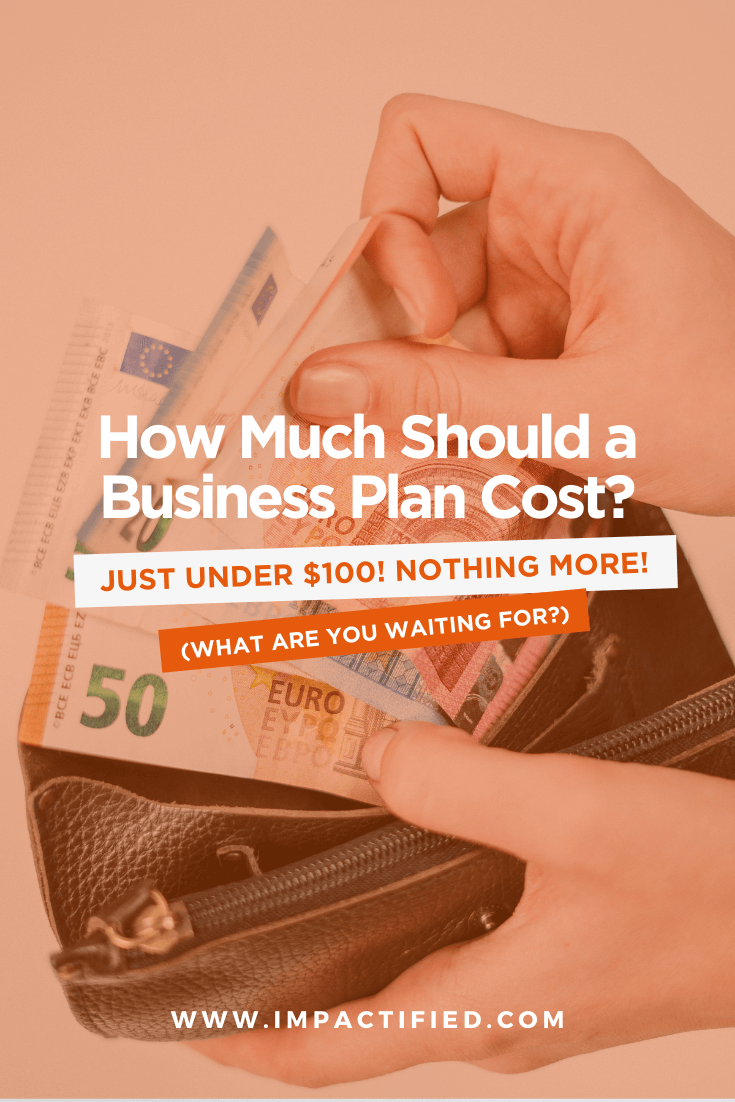How long should a business plan be? That question is typical, and every entrepreneur or business owner involved in a business plan writing process has to answer it sooner than later.
The stakes are high. If you consider that investors and bankers are permanently solicited and thus have a ton of business proposals on their desk (let alone in their inbox), then the quality, the ease of reading, and the length of a business plan are crucial. Not to say vital.
Is your business plan too long to read? You’re out.
Is it boring to read? Out.
Not visual enough? Out.
Not teasing enough? Out.
Not aligned with the code everyone expects you to follow?
Exactly.
Long story short? Business plan writing is a codified exercise, so your interlocutors will have specific (and standard) expectations as to what they want to read. And your job as the business owner is to provide them with just that.
Before getting into typical and ideal business plan lengths, let me give you a quick background reminder, though.
First, this article is part of a more extensive series of articles written to share tips on how to write a business plan people will want to read. As business coaches, we repeatedly answer the same questions, and coming up with these resources felt logical. So please give them a look!
Second, in case the articles are not enough and you want to get your own business plan ready in no time, we also created a very efficient business plan template and module (The Business Plan Builder) to get you going fast, with two hours of business coaching videos, a template you can use immediately, automated financial tables and two designer-made renderings you’ll be able to adapt to your liking. The module will get you going immediately and pays for itself in no time. You have no excuse!
Back to our question now: how long should a business plan be?
In this article, we’ll give you various elements of answer.
We’ll answer the question the best we can, but we’ll also go through a brief reality check to tell you how long a typical business plan is (as compared to an ideal one) and how many pages yours should be if you want to give your business a chance with investors.
We’ll also talk briefly about the importance of pitching your operational plan in your business plan. Finally, we’ll conclude with some hints about the importance of storytelling.
Sounds good? Let’s get going.
The stake: How long should a business plan be?
So, how long should a business plan be, then? Well. Let us come back to the basics: what is a business plan for? A business plan is an excuse to tell a story people about your business that people will want to remember.
How does that translate in terms of length? Your document should be long enough to convey your story and message. But it should also be short enough to keep people focused and attentive.
That’s not helping too much, we know. But read again. The answer is there (and in the next section, so keep reading).
Your document should be long enough to convey your story and message. If you get people excited about your project with just one page: fantastic. And if you need a few pages to get the same result, that’s fine too.
Your goal is to get people on board, so the stake is to pitch your story in just the right amount of words and pages needed to tease and get the excitement through. Once that occurs, your reader will ask you for more information, which gets you to second base. And then you’ll be able to get the relationship going.
However, there is no point in putting absolutely everything about your business in your business plan document. If the business plan is too long, you’ll lose your reader. And if the design is boring (i.e., black text on a white page), you’ll also lose the reader.
Having said that, the point is obviously not to start printing your business plan in blue on a pink background. It is to turn your business plan into something fancy to read. More on that later, but in short, you have everything to lose in not being concise and teasing!
So – how long is a business plan? Long enough to tease and turn people on. Short enough to keep them focused. That’s it. Period!
Okay, that’s still vague, so we’re going to give you the number you want. Keep reading.
Reality check: how long is a typical business plan, and how many pages should a business plan be?
Ready for the number you’re looking for?
Seven pages, plus the cover page (obviously) and the financial statements in an annex. That’s how long your business plan should be. Not less, not more. Here’s why.
So, how many pages should a business plan be?
As I’ve suggested before, your readers – investors and bankers – expect your business plan to match a code everyone in the industry abides by.
That code is there for a reason. It creates a standardized best practice that shows who’s done their research or not (insights on the investor’s side). And it gives business owners a framework to work with to structure their thinking (insights on the business owner’s side).
According to that code, your business plan should follow a precise outline and include the following seven points (and recommended pages):
- An executive summary
- A big picture presentation of the issue solved by the business idea
- A description of your offering (the products & services) and target market analysis
- A go-to-market strategy presentation (your business model, marketing plan…)
- An operations presentation (including the company description)
- A presentation of your management team
- Your financial plan & projections, plus the corresponding financial documents & cash flow projections
All of them. Not less, not more. Seven!
And, because you don’t want people to die out of boredom, you want each topic covered over one page tops! So, seven topics, seven pages. Plus a cover page and the financial tables, which, as we just said, can be provided in the annex.
If you want to learn more about business plan outlines and formatting, we wrote an entire article on the topic – follow the link.
How long is a typical business plan?
In comparison, though, the typical business plan is long, bland, and boring.
Most business owners are not aware of the code part of the exercise. Therefore, they have no idea about what they are expected to do. So they think a bit, try and find a free template and write their thoughts without being too careful about the amount of text they’re using.
Walk a mile in your investor’s shoes: how’s that type of business plan looking to you?
Yes, exactly.
The good news, though, is that you have a chance to stand out from the crowd now that you know. So what are you waiting for? It’s time to get started!
Beware of the one-page business plan trap!
Right. Before moving on to the next step – let me finish this point with a short comment on one-page business plans.
Long story short? These can be highly efficient as teasers if (if if if) you have a real strategic plan for your business and you can really (really really really) defend that strategic plan. Otherwise, just a page will lack depth and will likely be pointless.
Or, said differently, the stake is not to do a quick and dirty plan on a page. Instead, it is first to build an elaborate plan that allows you to consider your options for real. And then, to go straight to the point on one page designed to sell your story and tease your reader so bad they’ll want to know more. The logic is really close to the one you’d typically want to use to create the executive summary of a business plan. Can you see the difference?
To explore the topic in more depth, We’ve also published an article to explain how to use one page business plans (and why they can be a trap). Have a look and see for yourself!
In short: How many pages is a business plan?
- The typical business plan is usually way too long
- Your ideal business plan should be concise: it’s a pitch and a teaser!
- Aim for seven key topics, developed on seven pages. Period.
Pitching your operational plan in your business plan is critical.
So we just gave you a framework here: seven key topics, seven pages to tell a story and tease. But what’s the reader looking for exactly?
Again, it depends on who you are talking to.
Suppose you are looking to write a business plan for a loan. In that case, your interlocutor is likely to be a banker – and their expectations are very specific. We dedicated an article to the topic (follow the link), so I’ll be brief.
A banker wants to see that the operational plan in your business plan will enable you to repay the loan asap. The point, therefore, is to make sure that your seven pages build confidence in your ability to deliver on that.
Now suppose that you are looking to write an investor proposal. The perspective is dramatically different. An investor is not expecting you to repay a loan. Instead, they expect you to generate profit so they can get their money back a few years from now with an X factor as significant as possible.
There, the point is to show that the operational plan in your business plan is (beyond) likely to generate the drive needed to make a profit that makes their investment worthwhile.
As far as the length of your business plan document is concerned, your job is, therefore, to optimize the storytelling power of your presentation. Written and oral.
Again, the point is not to expend the document as much as needed to stuff everything inside it. Instead, it is to tweak and tailor your arguments to fit them nicely into your space. One page for one topic.
Ultimately, the goal is to tease and give people a reason to invite you to the next meeting, so be selective!
How to make the financial projections fit?
Financial projections are an essential component of your business plan if you remember the list of topics and pages we provided earlier. Still, if you only have one page dedicated to the subject, how do you do? How do you fit all the financial tables into one page?
Well, the keyword we used earlier was ‘financial projections’, which is a matter of showing what targets you have in terms of turnover and EBITDA for the next three to five years.
Reminder: your turnover is the money that comes in, while the EBITDA is the profit leftover on your bank account after all the expenses are paid, but before the taxman claims their share.
So, well, you could use that important page to throw in a graph showing both elements and a few other indicators. For example, your expected marketing plan budget, expected customer acquisition cost, expected margin or expected return on investment.
To go deeper, think about who your reader is.
If the business plan is written for a banker, show numbers related to your investment capacity and cashflow, and demonstrate your borrowing and repayment capacity.
If you are talking to investors, show that your financial estimates give your company some value and develop valuation numbers that show what’s in for the investors.
Note, however, that the financial statements and tables used to obtain your target numbers (Cashflow, P&L, and balance sheet) should not be displayed on your financial projections page. Instead, you can put them as annex documents at the end of the business plan.
Oh, and just in case you’re wondering how you’ll come up with those financial tables in the first place, we’re providing the automated spreadsheets you’ll need in our Business Plan Builder module – you know what to do!
Smart is better than short: focus on storytelling!
So, how long should a business plan be? How long should a startup business plan be? How many pages should a business plan be? What’s the ideal length of a business plan?
The questions are all the same, so the answer is also the same. To wrap things up, you’ll probably want to keep three key ideas in mind.
Idea one: make your business plan long enough to pass your message, but make it short enough to keep people focused.
Idea two: seven topics, seven pages, plus the financial information (the tables) in the annex. That’s it.
Your business plan should be a teaser, not a profitability report, so the focus should be on building storytelling. This is what business plans are about if you think about it. So, more than making yours short, make it smart!
Idea three: coming up with a short business plan usually requires a lot of business planning work. You first need to build a complete business plan that gets all your ideas laid down before summarizing everything into something straightforward. Sounds unfun, we know, but that’s also an excellent opportunity to stand on the table and take some needed perspective on your business, so why not give it a try?
Meet The Business Plan Builder: 2 hours of tutorial videos and the tools you need to get started
Now – If you are looking for a push to get started with everything we’ve talked about in this article, the Impactified Business Plan package was created for you! It’s built around over 2 hours of explanatory videos and comes with a template you’ll be able to use to:
- Figure out what you need to figure out – powerful, uh?
- Understand the business plan code!
- Write your business plan – with just the right amount of words and pages!
- Build your financial estimates – with automated tables!
- Create a visually appealing (designer-made!) document and deck people will want to read!
If you want to stop wasting your time, this is THE most simple business plan template, and you can’t afford to miss it!









